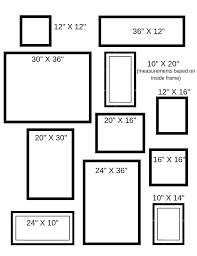The Versatility of Canvas in Art and Design
Canvas, a staple material in the world of art and design, has been used for centuries as a surface for creating masterpieces. Its versatility and durability make it a popular choice among artists, designers, and creators of all kinds.
Artistic Expression
Canvas provides artists with a blank yet sturdy surface to unleash their creativity. From oil paintings to acrylics, watercolours to mixed media, the texture and absorbency of canvas allow for various techniques and styles to be explored.
Interior Design
In interior design, canvas plays a significant role as well. Canvas prints are a popular choice for adding visual interest to spaces such as homes, offices, and commercial establishments. The ability to customise canvas prints with personal photos or artwork makes them a versatile decorative element.
Fashion and Accessories
Beyond traditional art forms, canvas is also utilised in the fashion industry for creating bags, shoes, and accessories. Its strength and flexibility make it an ideal material for items that require both durability and style.
Digital Design
In the realm of digital design, the term “canvas” has taken on new meaning with the rise of web development. HTML5 introduced the `
Conclusion
Whether used by painters wielding brushes or programmers writing code, canvas remains an essential medium for expressing creativity across various disciplines. Its adaptability continues to inspire innovation in art and design, making it a timeless favourite among creators worldwide.
Understanding Canvas: Definitions, Differences, and Uses
What is the mean in canvas?
In the context of canvas, the term “mean” does not refer to a mathematical average or statistical measure. Instead, it could be interpreted as asking about the significance or purpose of canvas as a material in art and design. Canvas serves as a versatile surface for artists to express their creativity through various mediums such as paint, ink, or mixed media. Its texture and durability provide a foundation for artistic exploration and visual communication. Therefore, when considering the question “What is the mean in canvas?”, it may prompt a discussion on the role and impact of canvas in enabling artistic expression and design innovation.
What is a canvas?
A canvas, in the context of art and design, refers to a strong and durable fabric typically used as a surface for painting or creating artwork. It provides artists with a versatile medium on which to express their creativity using various techniques and mediums such as oil, acrylic, watercolours, and mixed media. Beyond traditional art forms, canvas has also found its place in interior design and fashion industries due to its adaptability and aesthetic appeal. In the digital realm, the term “canvas” has evolved to include the `
What is canvas and canvass?
Canvas and canvass are two words that are commonly confused due to their similar spelling and pronunciation. “Canvas” refers to a heavy, durable fabric often used for painting surfaces, sails, or tents. It is also used metaphorically to describe the background or setting for an artistic endeavour. On the other hand, “canvass” is a verb that means to solicit votes, opinions, or support from a group of people. It involves conducting a survey or seeking feedback on a particular issue. While both words sound alike, their meanings and usage in different contexts are distinct and important to understand for clear communication.
What is canvas ChatGPT?
Canvas ChatGPT refers to the integration of OpenAI’s language model, ChatGPT, with the Canvas learning management system (LMS) to enhance educational experiences. This integration allows educators and students to utilise AI-driven conversational capabilities within the Canvas platform, facilitating interactive learning and support. With Canvas ChatGPT, users can engage in natural language conversations to get assistance with coursework, receive explanations on complex topics, or access additional educational resources. This innovative approach aims to personalise learning by providing instant feedback and guidance, ultimately enriching the overall educational process within the digital classroom environment.
